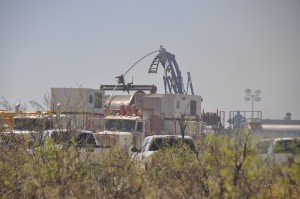 The percentage of income from a producing mineral property which one can claim as a deduction to account for depletion is currently 15% for oil and natural gas. For many royalty owners, the percentage depletion deduction is the only deduction they can take on their mineral royalty income. The purists involved in reforming the tax code want to lower the maximum corporate and individual rates to either 25% or 28% by ending numerous deductions. This would eliminate two vital deductions benefiting mineral and royalty owners.
The percentage of income from a producing mineral property which one can claim as a deduction to account for depletion is currently 15% for oil and natural gas. For many royalty owners, the percentage depletion deduction is the only deduction they can take on their mineral royalty income. The purists involved in reforming the tax code want to lower the maximum corporate and individual rates to either 25% or 28% by ending numerous deductions. This would eliminate two vital deductions benefiting mineral and royalty owners.
In June of 2013 the Senate Committee on Finance Chairman Max Baucus and Ranking Member Orrin Hatch announced that they were determined to complete tax reform during the current session of Congress. They planned to operate from an assumption that all exclusions, credits, and deductions were out unless there was clear evidence that they: (1) help grow the economy, (2) make the tax code fairer, or (3) effectively promote other important policy objectives.
The deduction of Intangible Drilling Costs (IDCs) by oil and gas producers benefits mineral and royalty owners by promoting drilling activity. IDCs permit a portion of the costs of drilling a well to be deducted fully in the year those costs are incurred, rather than being capitalized over several years. It has been estimated by industry experts that total drilling activity would decrease by thirty percent if current tax treatment of IDCs, percentage depletion, and the passive loss exception were ended.
In the face of this threat to royalty owners and producers, the National Association of Royalty Owners (NARO) and the Domestic Energy Producers Alliance (DEPA) joined forces to obtain a letter signed by four Senators and sent to the Senate Finance Committee. Delivered on July 26, 2013, the letter strongly supported the retention of percentage depletion and IDCs, and disclosed the negative effects on the U.S. economy and energy security if they are eliminated.
In spite of the stated support of several Senators, the Senate Finance Committee issued their discussion draft on Nov. 21, 2013 proposing to eliminate percentage depletion and changing IDCs from a current year deduction to a five year amortization. The Senate Finance Committee discussion draft does great harm to domestic independent producers and royalty owners.
Fortunately for royalty owners and producers, Senator Max Baucus has been nominated as the next ambassador to China. He is expected to be replaced as chairman of the Finance Committee by Senator Ron Wyden of Oregon. Most observers believe that the tax reform issue will be put on the back burner until the new Congress convenes in January of 2015.
Royalty and mineral owners should not become complacent, but use the time wisely by contacting their Senators and Representatives to remind them that there are 8.5 million American private owners of oil and gas mineral and royalty interests. Maintaining the percentage depletion deduction is a vital concern for all of them.



